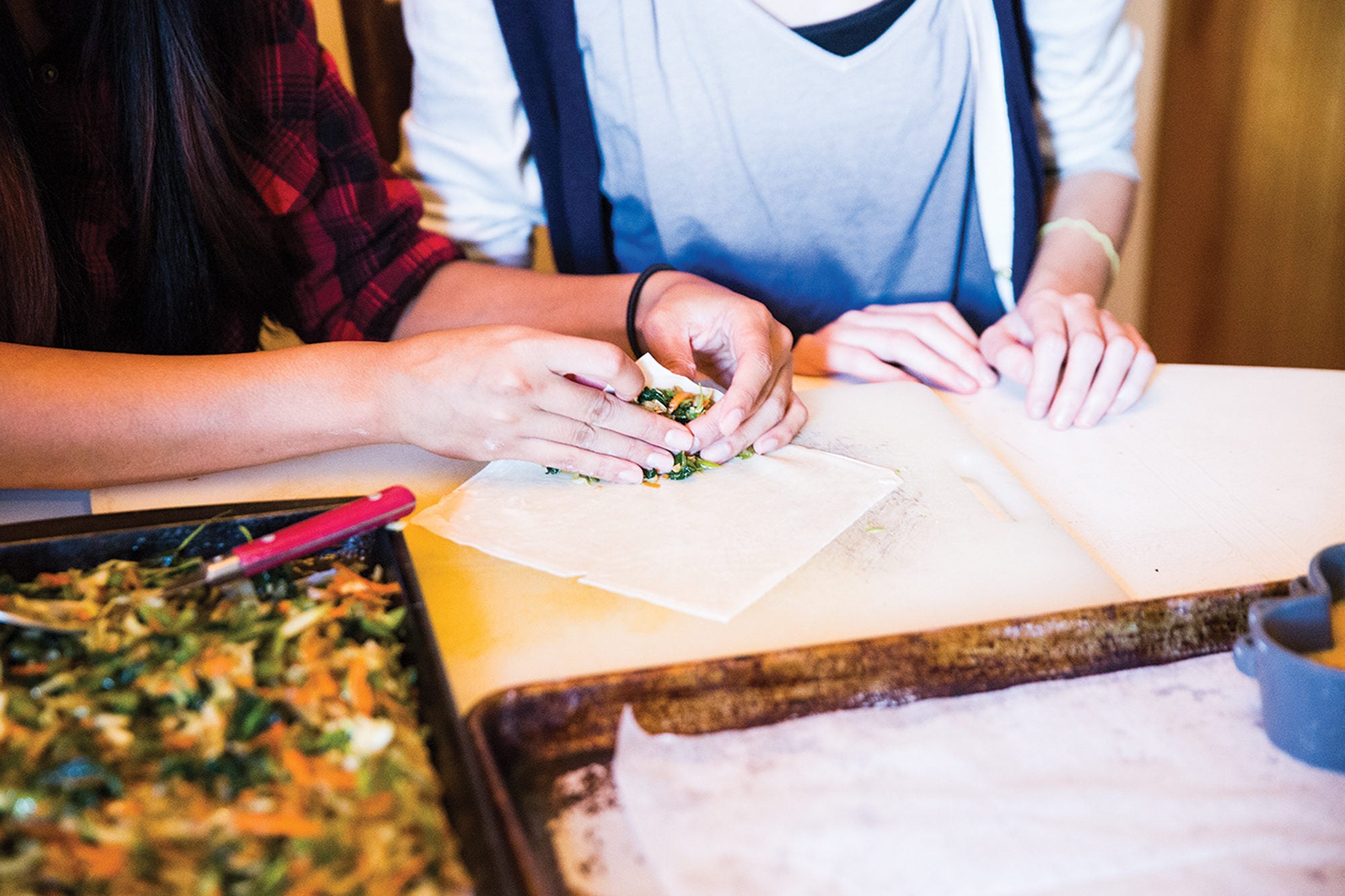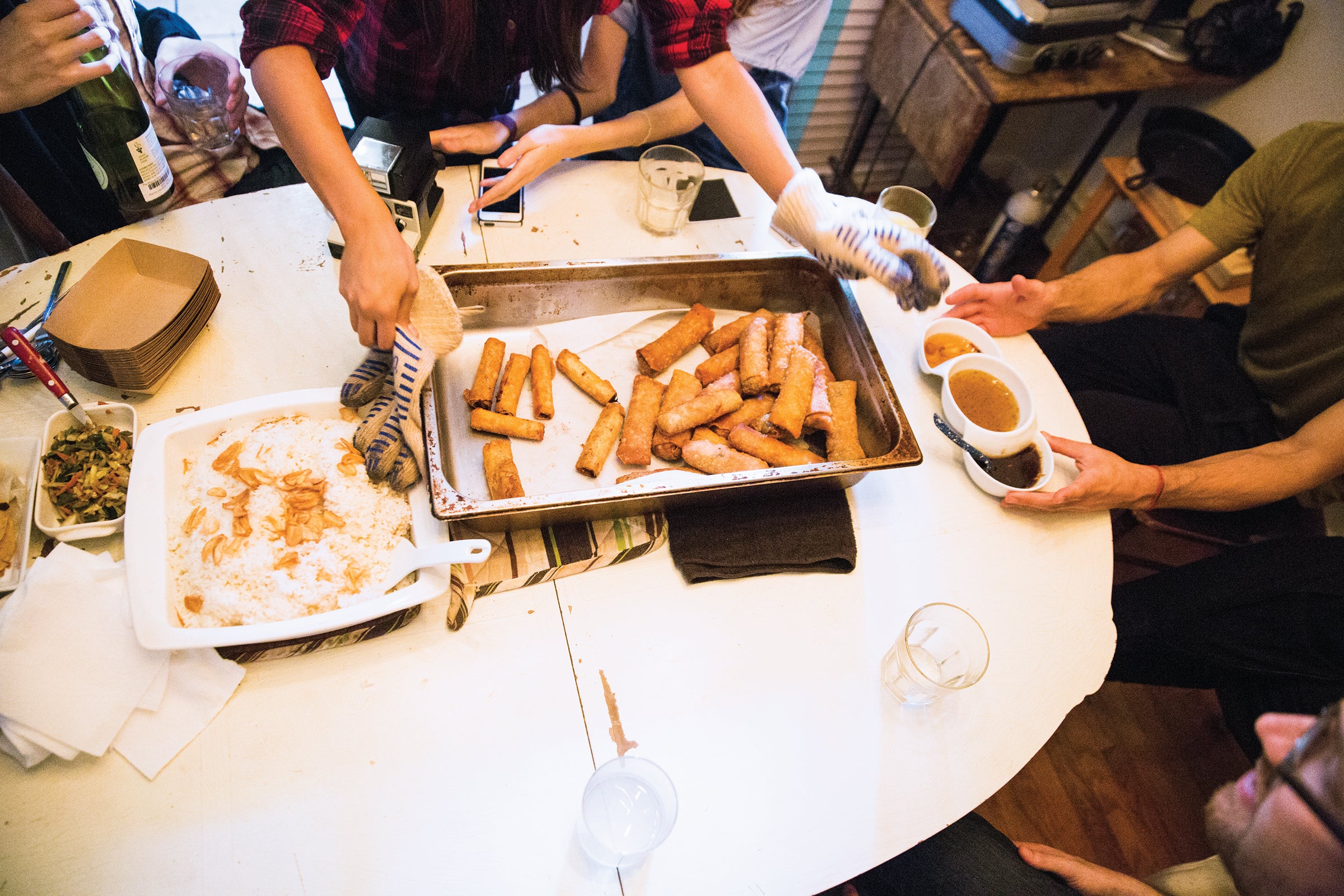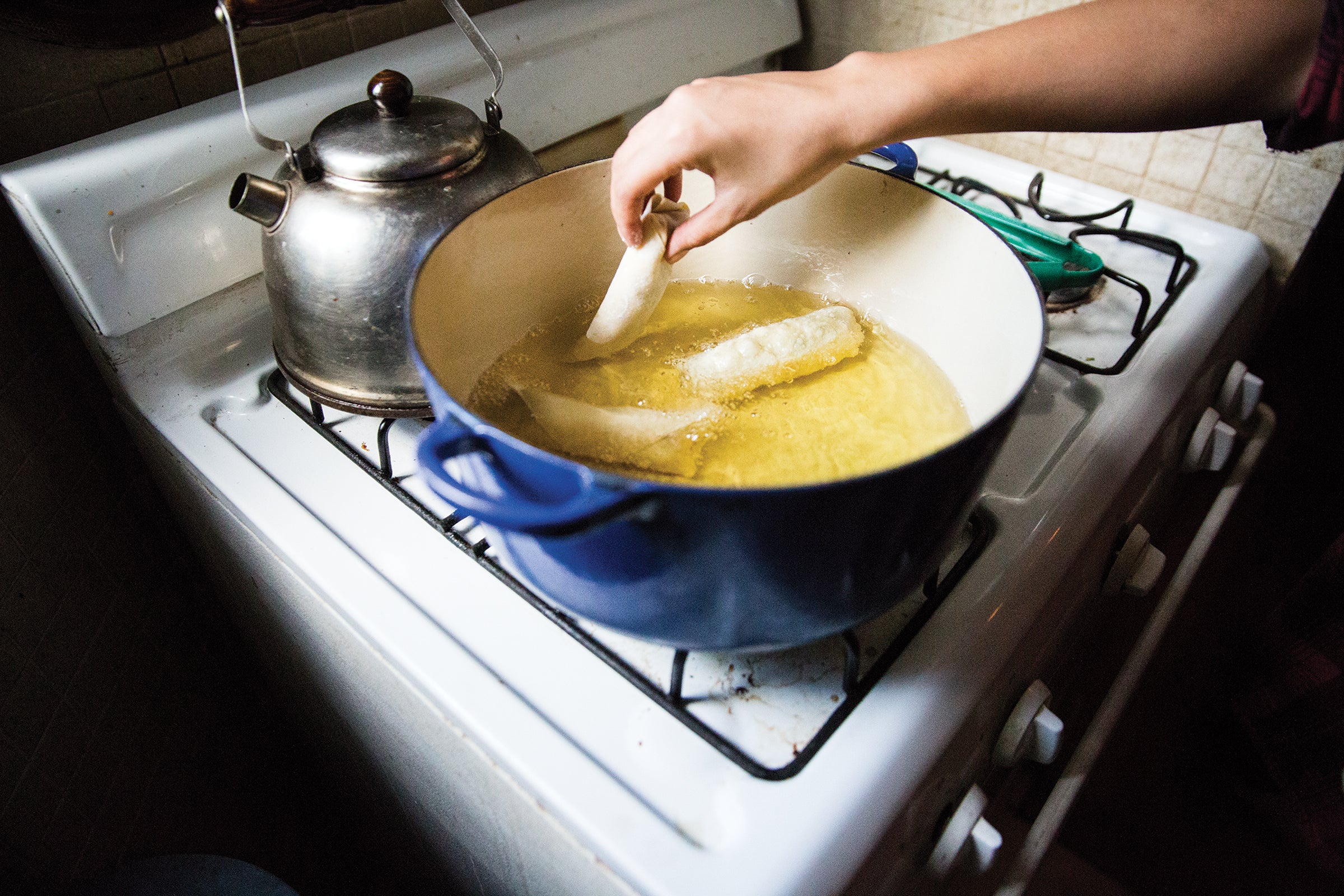
Communal construction and discord about one of the most ubiquitous party dishes of the Philippines.
Hot out of the frying oil, barely kissing the paper towel it was meant to drain on, I burn my stupid-impatient mouth on a tube of lumpia. Lumpia are deep-fried Filipino egg rolls. At their best, lumpia are unbelievably crunchy and not, as my mom would say, “wimpy.” When consuming these golden treats, you must hear an audible, definitive crunch.
This crispiness is a defining quality, except in the case of lumpia sariwa or the “fresh” variety made with crepes and raw vegetables and smothered with garlic gravy like a chimichanga. I get so bummed when my family orders deep-fried pork lumpia Shanghai from the local Filipino store and they don’t poke holes in the iconic foil trays to let the steam out—the trapped moisture renders the lumpia limp and soggy.

Why are lumpia such a big deal? Filipinos celebrate everything with food, and lumpia are a required staple of the buffet table. Every time I had a party, my high school friends would ask if they would make an appearance, and I’d huff, “Duh, we’ll have some at my birthday/graduation/wedding/funeral!” Unlike other large-format dishes, like adobo or pancit, lumpia are not easily thrown together in a pot. They’re labor intensive, which makes them more special to serve.
My grandma always seemed to have lumpia on hand for impromptu gatherings. They can be made en masse, hundreds at a time, and frozen in batches. From the freezer to the frying pan, lumpia retain their crunch. In earlier Filipino generations, families tended to be larger; in my case, I had five aunts and uncles on my mom’s side and dozens of older cousins. Imagine how many they could roll in an afternoon! Gathered around the table, with placemats under their plates, they would peel a thin crepe wrapper from a stack and spoon a hefty portion of filling onto the bottom portion. Much like a burrito, they’d wrap the lower section of wrapper carefully upward, fold in the sides, and finish rolling up into the top corner sealed with beaten egg.

I had always associated adulthood with knowing how to roll lumpia, because the adults were the ones I saw making them. Earning that spot at the table was part obligation but part privilege, especially since it meant that you were privy to tsismis (pronounced CHIS-miss), or gossip. Those new to lumpia would be focused on the task of rolling without breaking the wrapper, but once you got it, you could afford to listen to the chitchat, and it would get personal, fast.
“Did you hear she is pregnant? Oh, my gahd, what will they do?”
“Your cousin got into UC San Diego. How come you didn’t get in there?”
“Hoy, your uncle’s persimmon tree looks ready to pick. We should ask if we can hab some.”
I would be watching TV nearby, trying to eavesdrop, but foiled because I do not understand the parts that were in the Philippine national language, Tagalog. Later generations of Filipino-Americans that I know have fewer siblings, and the task of rolling hundreds of lumpia sounds daunting. A few friends tough it out alone, listening to podcasts or talking on speakerphone. I had never considered recruiting non-Filipino friends until fairly recently. Lumpia, I realized, started out as a family affair.

The Philippine archipelago contains over 7,000 islands, so there is vast variation from recipe to recipe. Traditionally, making lumpia was kept to the bloodline, because no one outside of your kin could agree on what goes into them. Even though there are many kinds, my mom says that everyone eventually will “find their own way toward the lumpia,” or develop their personal recipe.
Filling is where the paths fork. Open-ended lumpia Shanghai use a mixture of pork and beef, rolled like skinny taquitos. Lumpia prito or gulay are mostly vegetarian stir-fry, sometimes with tofu, small shrimp, or bits of ground chicken and pork added—and rolled as thick as cigars. Lumpia saging or turon is a dessert stuffed with fat pieces of saba banana and a slice of jackfruit, dusted with brown sugar, and fried to a sticky mess.
My mom speaks fondly of using the coveted ubod, or freshly harvested heart of palm. Its flavor has been compared to artichoke hearts and asparagus with the texture of crisp water chestnut. The vegetable is extremely perishable and dramatic in origin. Carving away the core of a wild palm tree results in its death. It seems wasteful, but for cultivated palm varieties, it is only harvested if the tree is no longer producing external fruit. In a natural disaster, when palm trees are felled, it’s a race against the clock to harvest and consume the ubod before it spoils.
Once lumpia are rolled, they are frozen in large plastic bags so everyone can take home their handiwork. When it is time to eat, they are fried in a few inches of vegetable oil until they are golden brown and drained on paper towels. Grab a few and choose your dipping sauce. My favorite is sawsawan, which is a lot like North Carolina bbq sauce. It helps cut the oily slick in your mouth with the sting of vinegar and crushed garlic. Mom makes her own sweet and sour sauce with ketchup, apple cider vinegar, brown sugar, and red chile flakes. If you want more umami, opt for oyster sauce.
Lumpia in its many forms is not a casual dish. It is made with time, love, and sometimes sacrifice. If you have the privilege of going to a Filipino party, beeline for the lumpia before they get cold.
